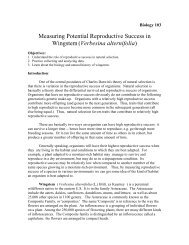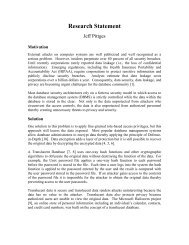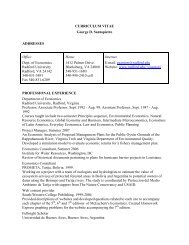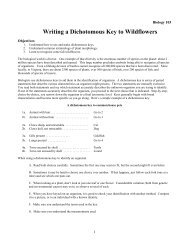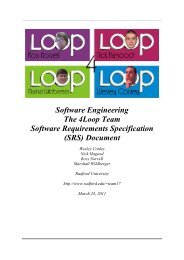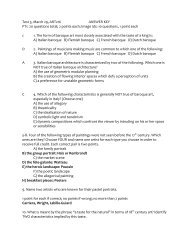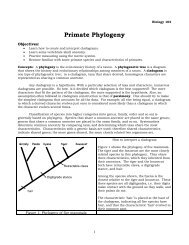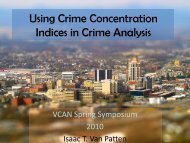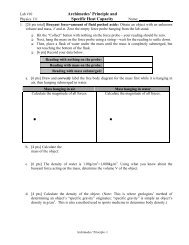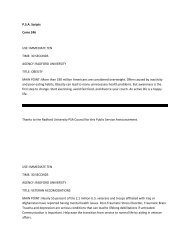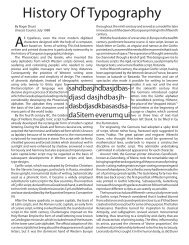Lab Manual - Radford University
Lab Manual - Radford University
Lab Manual - Radford University
Create successful ePaper yourself
Turn your PDF publications into a flip-book with our unique Google optimized e-Paper software.
64 CHAPTER B. COMPUTER LABORATORIES (CLEA)<br />
In this case the unknown object’s coordinates are easy to determine since object X is at the midpoint of<br />
the line connecting stars A and B. Look at the table below.<br />
Table B.1: Coordinate data for stars A and B and the unknown object X.<br />
Object Right<br />
Ascension<br />
Declination X Position on<br />
Image<br />
Y Position on<br />
Image<br />
Star A 13 h 0 m 0 s 32 ◦ 0’ 0” 10 12<br />
Star B 14 h 0 m 0 s 29 ◦ 0’ 0” 18 8<br />
Object X ? ? 14 10<br />
It will have coordinates that are then the values at the midpoint, 13 h 30 m 0 s right ascension and 30 ◦ 30’<br />
0” declination. In general of course, things will not be this simple! In addition to the ideal situation above<br />
being unlikely, the equatorial coordinate system is composed of curves of right ascension and declination,<br />
not straight lines. Still, a simple coordinate conversion can be done to find the coordinates of the unknown<br />
object.<br />
The positions of the known objects will be obtained using a guide catalog, in this case the Hubble Guide<br />
Star Catalog. This catalog is a compilation of the positions of about 20 million stars (almost all the stars<br />
greater than 16th magnitude). The program will allow you to identify stars in this catalog and then do the<br />
coordinate transformation from the object’s coordinates in the image to the equatorial coordinates in the<br />
sky.<br />
In this lab you will make simulated observations of the sky, identify an asteroid in pairs of CCD images<br />
and use measurements of the parallax (by comparing images from two different observatories on either side<br />
of the United States) to calculate the asteroid’s distance.<br />
II. Reference<br />
• CLEA Astrometry of Asteroids <strong>Lab</strong>,<br />
http://www.gettysburg.edu/academics/physics/clea/CLEAhome.html<br />
• Astronomy <strong>Lab</strong> A.1<br />
III. Materials Used<br />
• CLEA Astrometry of Asteroids program<br />
• calculator<br />
IV. Observations<br />
The observations you will be making will be simulated using the CLEA program. You will do the following<br />
things in this observation:<br />
• learn to display CCD images of the sky using an astronomical display program<br />
• blink pairs of images and learn to identify objects which have moved from the time of one image to<br />
the next<br />
• call up reference star charts from the Hubble Guide Star Catalog (GSC)<br />
• recognize and match star patterns on the GSC charts against the stars in your image<br />
• measure the coordinates of unknown objects on your images using the GSC reference stars<br />
• measure the parallax of an asteroid and use that to find its distance



